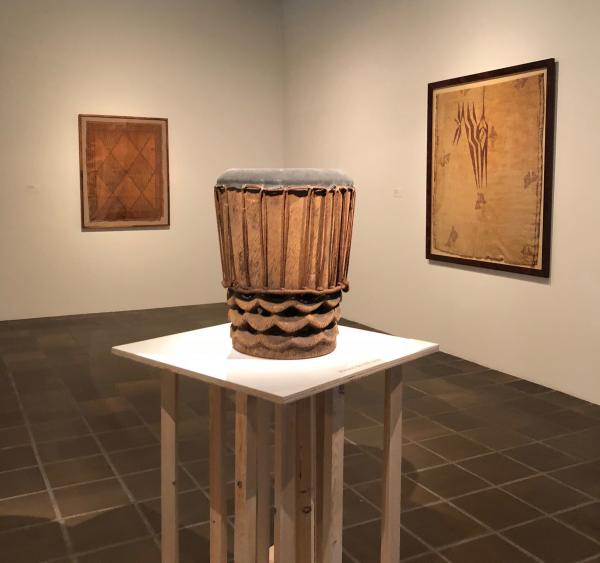The Polynesian islands of Hawaii have long had a strong cultural tie to music, and cultural rites involve expressions of dance, music, and poetry blended together. Drums were beautifully carved objects used to announce important events and celebrations. The drums accompanied chants, songs, and hula dances and were played while sitting. Each had its own name, signified social status, and could be made with a variety of decorative motifs.
This wood base was made from a hollowed tree trunk with shark or ray skin pulled taut over its top. The skin was fixed with fiber cords to studs at the bottom of the base, and the cords were pulled down in various linear or zigzag patterns. The base of this example was carved with openwork crescents done in layered rows. Crescents and other openwork drum-base designs, such as the popular human figures and geometric designs, contained the mana of the drum. Mana is considered the life source and abstract measure of power in most Polynesian societies, and often resides in important people and objects.
On view in the Art of the Pacific Gallery, Ahmanson Building, Level 1.



